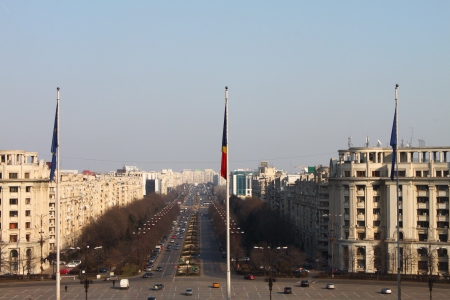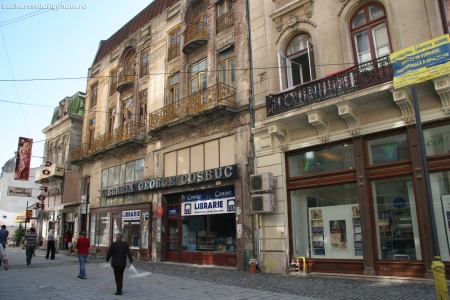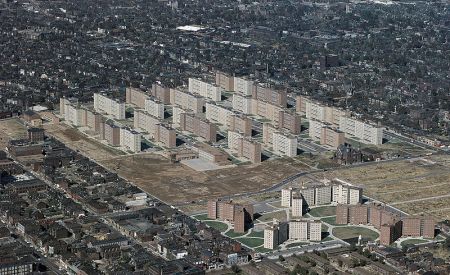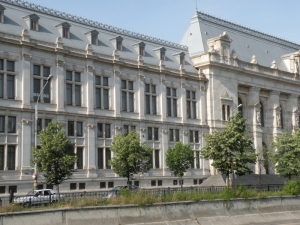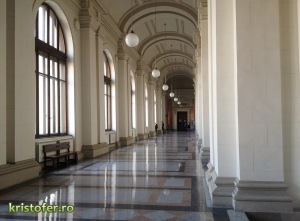
The existing city arrangement of Bucharest can be categorised as a radial-concentric one, maybe even a mono-centric one. For us to understand its urban typology, we’ll have to observe the modifications of the city as a result of the sociological, economical and geographical issues. Also, the symbols of Bucharest, its planning and use of space have been essentially determined by its influences and models.
Although the existence of Bucharest was first attested in 1459, its first utilisable map only appeared in 1852. As you can see from the map below, the radial rings prove that the city grew concentrically.
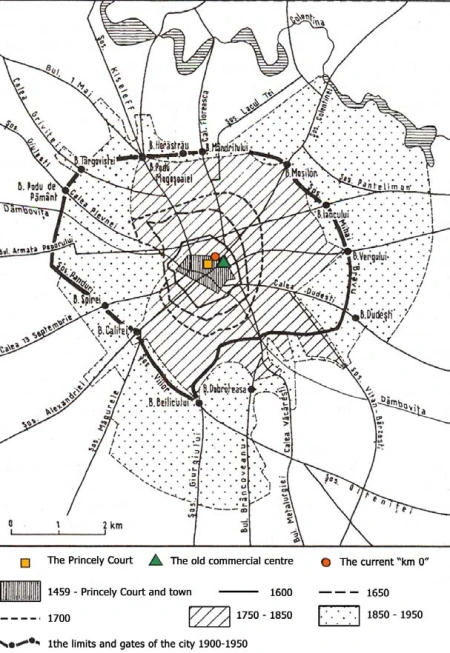
Historically, during Carol I’s kingdom, the development of the city changed through the implementation of 60 miles of new roads (1895-1899). These initial operations were finally concluded between the 2 World Wars and the result was of an old city built within the new structures. The city was called “little Paris” as the French influence was clearly observed on all the major boulevards where restaurants, cinemas, theatres and small palaces were easily accessible for a more fulfilling social life.
However, between 1945 and 1989, when the communist regime was in power, new ideas had been implemented in the urban structures of city: uniformity, control, centralised economy and density of population. One of the first stages was to centralize the industrial zones, to build on a big scale so that people would feel the power and solidity of the new environment. The constructions from that time are still considered out of scale and out of time.
It was during the 1960s that a severe economic and social change happened in Romania and it was perceived initially as a step towards the values of the West. Fundamental during that time was in 1968, when Romania defended the “national” rights of the Warsaw Pact community during Czechoslovakia’s invasion by the Russians. It was in this context that the idea of a new urban Romania was first instilled. The major peasant class was somewhat negating the plans for a liberated industrial country and as such, an upheaval started in most major cities. In Ploiesti, Onesti, Bucharest (among others), lots of new grey concrete flats buildings were suddenly constructed, the Iron Gates dam was built and various other industrial projects emerged. This was all part of a jump to urban industrialism. Wherever a new mega-plant was built, enormous blocks of apartments were also raised to house the workers.
This whole concept of urban industrialization was inspired by Le Corbusier’s Radiant City idea from the 1930. In brief, the plan was based on the construction of 5 to 13 story blocks of apartments which were divided by “green spaces” and expansive boulevards. The same ideas were implemented in the USA, where similar housing projects became known as “The Projects”, places that have been transformed over time in racial ghettos (as was Pruitt-Igoe in St. Louis before it was demolished).
Similar concepts were instilled in Paris (Nanterre neighbourhood), Moscow (huge housing development zones), Tokyo (“danchi” projects), New York (Coop-City), London (Thamesmead housing development)
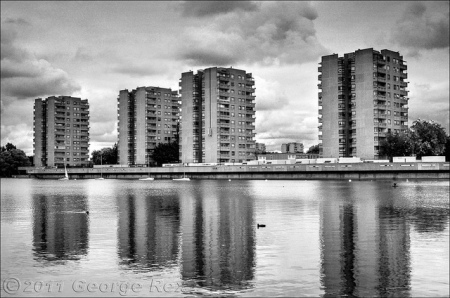
Thamesmead, London, UK
Photo credits: George Rex
Nevertheless, Romania’s idealism of a future based on high-rise blocks of flats was widely spread throughout the world and it was partly a result of a world-wide generation of architects and urban planners inspired by the idea of an apartment block where “good life” is enjoyed. That was at the time the international pattern for the “new urban persona”. The problem in Romania was, however, the intensity of this model. As it was apparent from other countries that have tried the same, the long-term benefits of these developments to the social life were to say the least questionable in Romania.
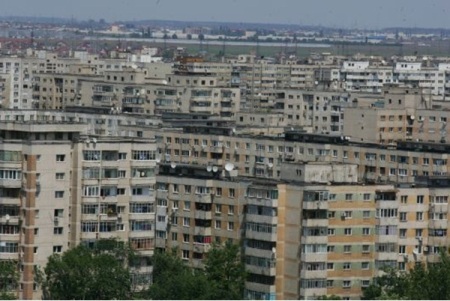
The most incapacitating effect was the complete “dehumanization” that these new urban developments imposed on their population. All the citizens’ homes became nothing more than numbers, tagged by a series of anonymous letters and numbers: (i.e. Bucharest, Sector 2, str. 1st May, Entrance B, Floor 6, Apt 39). Shopping was also controlled by the government and it was separated into various buildings where there was no emphasis on the customer’s needs. Basically, everyone had to buy what was offered, although this was rarely what was wanted (i.e. access to fruit, meat, milk and eggs was limited and based on the number of people from the household – you had to prove you have a family if you were to buy more than 3 eggs and so on). By congesting so many people together, the system eliminated any idea of shared responsibility for public spaces. In addition to this, people would be moved around as per the desires of the men in charge. Numerous families were moved from building to building and even from city to city as their homes would be taken away (for more important people). The apartments, even though very cheap to fund, were a tool of political manipulation, as they could have been taken away as randomly as they were given. On top of this, shortly before the communism fell, flats no longer had head in winter; there was scarce access to food, bad public transport and no concern for the individuals. The population was seen as a unit and devilishly, Ceausescu also decided that villages can be bulldozed and then substituted by concrete apartment blocks and this would also urbanize the peasant generation within a short period of time. Although this project was launched, the idea fell through because of his fall from power in late December 1989.
It is remarkable that major changes appeared over a relatively short period of time with the operations realised in the 1980’s, when the spatial configuration changed from an instrumental use, to a symbolic use, also confirmed by the location of different activities in relation to integration patterns.
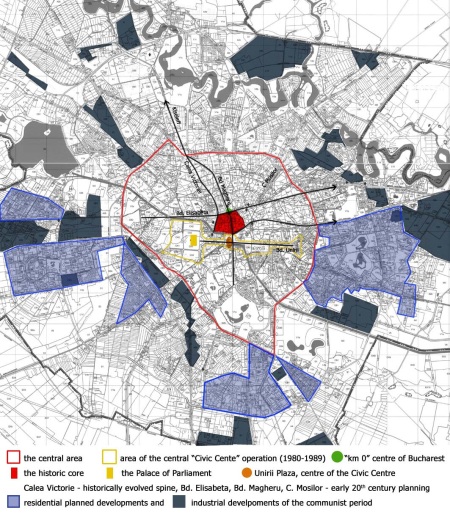
Marina Gogeanu
